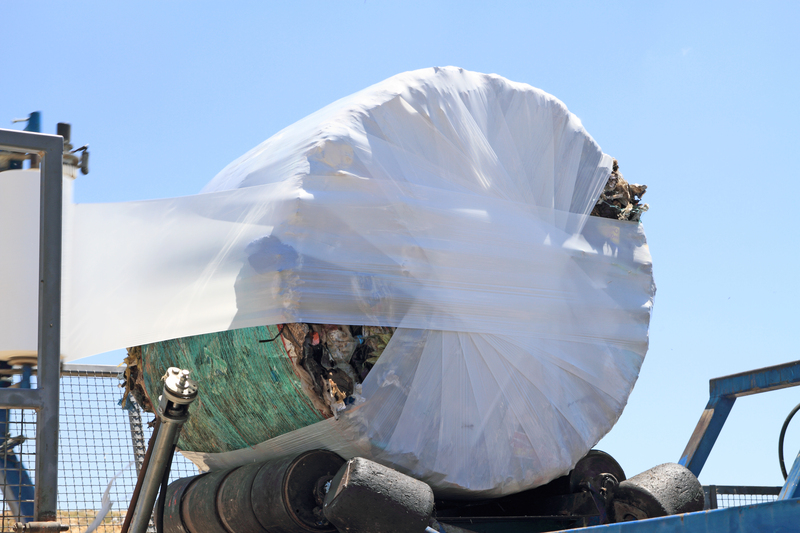The Best Methods for Breaking Down Pots and Pans for Recycling
Recycling old cookware is an essential step towards living a more eco-friendly lifestyle. If you have accumulated a collection of old, battered pots and pans, you might be wondering what to do with them other than throwing them in the trash. Fortunately, there are several eco-friendly techniques for breaking down kitchen cookware so they can be properly recycled. This comprehensive guide will provide you with all the information you need to understand how to recycle pots and pans efficiently and responsibly.

Why Should You Recycle Pots and Pans?
Many households replace cookware frequently due to wear and tear, changes in cooking habits, or upgrades. Pots and pans are commonly made from valuable metals like aluminum, stainless steel, or cast iron. Recycling these items keeps useful materials in circulation and reduces landfill waste. Furthermore, it helps conserve energy and resources needed to mine and process new metals.
- Environmental Impact: Discarded cookware contributes to landfill mass and cannot biodegrade.
- Resource Recovery: Metals can be melted down and reused for new products, saving raw materials.
- Economic Benefits: Selling or donating usable items helps local communities and reduces waste costs.
Understanding Which Cookware Can Be Recycled
Before breaking down your old pots and pans, it's important to identify which types of cookware are recyclable. Not all materials are accepted by every recycling facility, so always check with your local waste management guidelines.
- Aluminum cookware: Highly recyclable; check for coatings that might need to be removed.
- Stainless steel pots and pans: Most locations accept these, provided they're clean and free of plastic parts.
- Cast iron: Dense and durable, but widely recyclable.
- Copper cookware: Often recyclable, especially valuable to scrap metal collectors.
- Nonstick cookware: Can be more complicated due to Teflon or ceramic coatings.
Preparation: What to Do Before Breaking Down Cookware
Proper preparation ensures safe and efficient recycling. Follow these key steps:
- Clean the cookware thoroughly. Food residues and grease can contaminate recycling batches.
- Remove any detachable parts (plastic, rubber, or wood handles and lids). Most facilities require only the metal base.
- Sort by type. Separate different metals if you have a variety (aluminum, steel, etc.), as this simplifies processing for recyclers.
Top Methods for Breaking Down Pots and Pans for Recycling
1. Manual Disassembly
The most hands-on method for breaking down old cookware is manual disassembly. This allows you to separate recyclable metal from non-recyclable parts precisely. Here's how:
- Gather Tools: You'll typically need a screwdriver, wrench, pliers, and possibly a hacksaw for more stubborn or riveted parts.
- Remove Handles and Lids: Unscrew or detach any plastic, rubber, or wooden handles, which should be disposed of with household waste or recycled separately if possible.
- Take Off Non-Metal Parts: Scrape away silicone or nonstick coatings if recommended by your recycler.
- Disassemble Composite Pots: Some pans have metal layers sandwiched with other materials. Use tools to separate these layers if feasible.
2. Safe Cutting or Sawing
For large pots and heavy-duty pans that won't fit in your recycling bin or facility hopper, cutting them down can be helpful:
- Use a metal saw or grinder to slice through thick sections. Always wear protective goggles and gloves for safety.
- Cut along seams or joints for easier breakdown.
- If you're uncomfortable with power tools, consult a local metalworker or recycling center for assistance.
3. Utilizing Scrap Metal Collection Points
If manual breakdown isn't feasible, most municipalities and private scrap dealers accept whole pots and pans as long as non-metal components are removed. They have heavy-duty equipment to shred and sort items. To maximize recyclability, ensure your cookware is:
- Free of food residue
- Separated by material (e.g., all aluminum together)
- De-cluttered from any attached plastics or glass lids
4. Specialty Recycling Programs
Many cookware brands and stores now offer take-back programs. These initiatives accept old pots and pans--sometimes even offering discounts on new purchases! Participating in such programs guarantees responsible recycling, as brands handle the breakdown using best environmental practices.
- Contact your cookware manufacturer or retailer to ask about recycling options.
- Research local "Hard-to-Recycle" events that accept cookware.
- Some recycling mail-in services offer pre-paid postage for shipment.
5. Donating or Repurposing
Not all pots and pans need to be melted down--reuse is an excellent form of recycling. Consider:
- Donating serviceable pots to local shelters, charities, or thrift shops.
- Turning old cookware into garden planters, art projects, or pet water dishes.
- Checking "Buy Nothing" or local online groups to give away old items directly.
Specific Tips for Breaking Down Different Types of Cookware
Breaking Down Aluminum Pots and Pans
Aluminum is lightweight and easy to cut or bend. Most recycling centers accept aluminum, but require it to be clean and free of other materials. Steps include:
- Remove non-aluminum parts (handles, screws) with screwdrivers or pliers.
- If the pan has a nonstick coating, try to remove this with a scraper or consult your recycling facility about their requirements.
- Cut or crush larger pieces if necessary for fitting into recycling bins.
Disassembling Stainless Steel Cookware
Stainless steel is prized for its recyclability and quality. Separate handles and glass lids, and ensure the metal is left bare for recycling. If the pan has copper or aluminum cladding, you usually do not need to separate layers--most scrap dealers can manage this during processing.
Breaking Down Cast Iron Pots and Pans
Cast iron is extremely durable and heavy. You usually do not need to break cast iron cookware apart unless required by the recycler. Remove any attached wooden handles or lid knobs before recycling. Given its value, consider resale or donation if the item still functions well.
Handling Non-Stick and Teflon Cookware
Nonstick coatings such as Teflon present additional complications. Many recyclers cannot process cookware with intact nonstick surfaces because PTFE (polytetrafluoroethylene) doesn't mix well during metal melting. Here's what you can do:
- Contact your local recycling center to ask about accepted materials.
- Consider mail-in specialty recycling programs that accept nonstick-coated pans and ensure safe breakdown.
- If no recycling options are available, look for creative upcycling uses to keep the item out of the landfill.
Safety Tips for Breaking Down Cookware
- Wear gloves and safety goggles when using tools to avoid cuts and injuries.
- Work in a well-ventilated area, especially when using power tools on metal.
- Dispose of any non-recyclable materials according to local waste guidelines.
Where to Take Broken Down Pots and Pans for Recycling
Once you've separated and suitably prepared your cookware, it's time to find the right place for disposal:
- Municipal Recycling Centers: Many have special bins for scrap metal. Check their website for regulations.
- Scrap Metal Yards: These facilities accept most metals and offer payments for valuable scrap.
- Private Recycling Services: Look for companies specializing in household goods recycling.
- Retailer Take-Back Programs: Some brands and stores accept old cookware at drop-off points.

Frequently Asked Questions About Recyling Pots and Pans
Can I recycle pots and pans curbside?
Check with your local municipality--most curbside recycling programs do not accept large metal items or cookware due to equipment restrictions. Scrap metal and cookware are best brought directly to appropriate collection points.
Should I remove all non-metal parts before recycling?
Yes, remove as much non-metal as possible. Items like plastic handles, rubber gaskets, and glass lids should be separated and recycled or disposed of appropriately.
Can nonstick cookware be recycled?
It depends. Some recyclers and programs accept pans with nonstick coatings, but most do not. Always confirm with the recycling service before dropping off.
Is it better to donate than to recycle?
Whenever possible, reuse trumps recycling. Donating usable pots and pans benefits those in need and extends the lifetime of each item, reducing its environmental impact.
Conclusion: Making Pots and Pans Recycling a Habit
Properly breaking down and recycling old pots and pans is a crucial part of a sustainable kitchen. By following the steps outlined above, you contribute to a healthier environment and may even inspire your community to embrace eco-friendly habits. Remember, each time you choose to recycle or repurpose old cookware, you're helping to conserve resources, reduce landfill, and minimize your carbon footprint.
Do your part by spreading awareness of the best ways to break down kitchen cookware for recycling and supporting local recycling initiatives. The planet--and future generations--will thank you!
Ready to Recycle? Here's a Quick Checklist:
- Clean and prepare your cookware.
- Disassemble using the appropriate tools.
- Remove all non-metal parts.
- Sort metals by type where possible.
- Contact your nearest recycling center or scrap yard for drop-off instructions.
The best methods for breaking down pots and pans for recycling are simple, safe, and immensely effective. Start today and make a positive impact on our planet--one pan at a time!